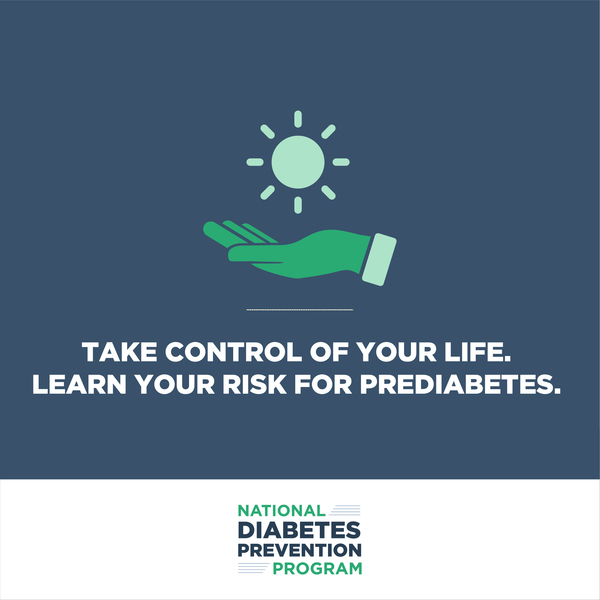
by Guest | Oct 24, 2019 | Being Well
In Tillamook County, more than one in every ten people live with type 2 diabetes. Similar to other local, state, national and even global trends, type 2 diabetes rates are increasing at an alarming rate. Based on national data, one in every three people is at risk for developing prediabetes and 90% of them do not even know it. According to the Oregon Medical Association, if left unaddressed, there is a 15-30% chance an individual with prediabetes will develop type 2 diabetes within five years.
The good news is that prediabetes CAN be reversed, and the same steps for reversing prediabetes can greatly improve disease management for people who already have type 2 diabetes. What can you do? Here are some steps you can follow to take charge of your health:
1) Take the “Do I have prediabetes” risk test at https://doihaveprediabetes.org/ and schedule an appointment with your care provider if your score is 5 or higher.
2) Attend the upcoming Diabetes Prevention Program (DPP) orientation, scheduled for October 29th, noon-1 pm, at the Tillamook YMCA, 610 Stillwell Ave.  Participants will take the prediabetes risk test and learn how they can take part in the year-long program. The Tillamook YMCA offers DPP locally free of charge, which is made possible through a partnership between the YMCA, Tillamook County Community Health Centers, Columbia Pacific CCO and the Oregon Wellness Network.
Participants will take the prediabetes risk test and learn how they can take part in the year-long program. The Tillamook YMCA offers DPP locally free of charge, which is made possible through a partnership between the YMCA, Tillamook County Community Health Centers, Columbia Pacific CCO and the Oregon Wellness Network.
3) Schedule an annual well visit with your primary care provider and ask to find out your risk for type 2 diabetes. A simple blood test, called an A1C, can be performed that will show average blood glucose (or blood sugar) levels over the past three months. Your healthcare provider may use your A1C to diagnose prediabetes or diabetes and to monitor your blood sugars over time. Most insurance plans cover the A1C test for individuals at risk of diabetes and prediabetes. Risk factors include having had gestational diabetes while pregnant, family history of type 2 diabetes, being overweight, having high blood pressure, and/or being physically inactive. Your physician can also refer you to a Registered Dietitian or a Certified Diabetes Educator, who can help you learn ways to use nutrition and lifestyle techniques to positively impact your health and blood sugar balance.
4) Begin to track and modify lifestyle habits, such as becoming more physically active, eating healthier, getting enough sleep and cutting out tobacco. These have been shown to drastically reduce risk for type 2 diabetes as well as improve disease management in people who already have it.  Additionally, losing 5-7% of one’s body weight has also been shown to significantly reduce risk for type 2 diabetes. For someone who weighs 200 lbs., for example, that would mean losing 10-14 lbs.
Additionally, losing 5-7% of one’s body weight has also been shown to significantly reduce risk for type 2 diabetes. For someone who weighs 200 lbs., for example, that would mean losing 10-14 lbs.
5) Share your story. Talk to others about your health and seek out ways to make health behavior changes that will work for you. Ask family members, friends and co-workers to support you (and each other!) in efforts to improve lifestyle habits. Changes are made easier when we do them with others.
6) Know where to go. Keep your eyes and ears open to community programs, classes and resources that you can take advantage of to support your health. From Wellness Walking Groups to Cooking Matters Classes, there are many free, local activities and programs that support healthier lifestyles. Visit tillamookcountyhealthmatters.org or follow Tillamook County Wellness on Facebook, Instagram and Twitter for inspiration and ideas.
7) Ask for what you need. In Oregon, CCOs provide insurance coverage and more flexible healthcare funding for members on the Oregon Health Plan. If access to care or other challenges prevent you from being your healthiest self, the Columbia Pacific CCO wants to hear from you. Consider attending the Columbia Pacific CCO’s upcoming event, October 24th, 4:30-6:00 pm, at the OSU Extension/Partners for Rural Innovation Building located across from the Tillamook County Fairgrounds on Third Street. Attendees will learn about and get a chance to give input on plans for improving local services to support community health. Childcare, interpretation and transportation will be available by request. Contact knopfn@careoregon.org for more information.
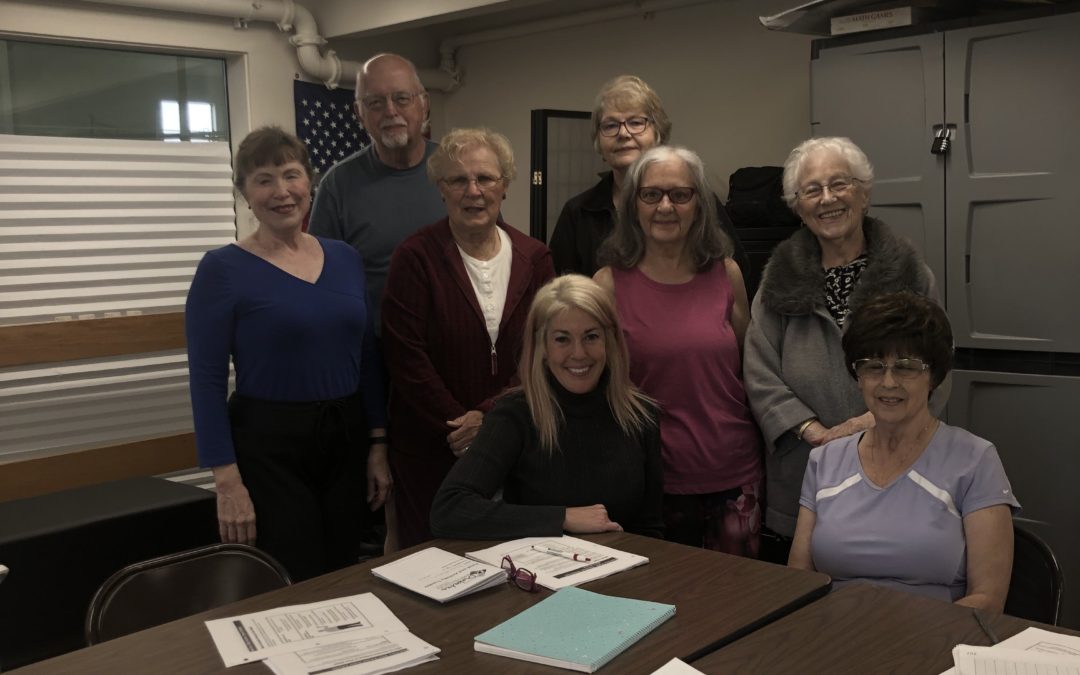
by Shelby | Oct 17, 2019 | Being Well
Are you at risk for type 2 diabetes or know someone who is? In Tillamook County, there is currently 11.3% of the population that have type 2 diabetes, and approximately 30% at risk for prediabetes. The American College of Sports Medicine and the American Diabetes Association through their research “Exercise and Type 2 Diabetes,” found that lifestyle modifications such as those taught by the Diabetes Prevention Program (DPP) reduced the number of people with type 2 diabetes by 58%. Fortunately, the YMCA in Tillamook offers DPP, which is a Center for Disease Control and Prevention National Diabetes Prevention Program. The program is sponsored by Northwest Senior and Disability (NWSDS), and is at no cost for those who qualify. The DPP class is offered weekly for the first 16 weeks and take place during the lunch hour, noon-1 p.m. on Tuesdays. After the first 4 months, the group meets every other week. Program instructor Kelly Benson praises the program, emphasizing the success of the group in being able to track their progress, and notes an overall successful effort in individual attitude and perception change.
Taking a closer look at the program, DPP participants will work with a knowledgeable lifestyle coach in a small group setting who will introduce topics on healthy eating, physical activity, behavior changes, as well as weight loss and how it can help reduce the risk of developing diabetes. Linda Langer is an active resident of Tillamook county who has had quite a success with YMCA’s DPP. Linda reports a lifelong battle with weight management and started going to the Tillamook YMCA five years ago. After losing 12 lbs., she reports feeling “stuck” and was worried that she might be at a permanent plateau in her weight loss. Through trainers at the YMCA, Linda was connected to the DPP program. Upon starting the yearlong program in April 2019, Linda has lost an additional 28 lbs. to date, and exercises 3x per week. She reports being motivated by having more energy, and adds her mental wellbeing is affected positively. She also notes that the group setting of the program helps to build community and accountability as participants can share and connect stories of success, struggles, and encouragement. The most significant take away from the program so far that Linda reports, is that it taught her how to be more mindful of food choices and the impact those choices will have on her health. She finds being extra-focused and mindful is especially important when attending events and celebrations.
If you have already received a prediabetes diagnosis or are interested in learning if you are at risk, attend the upcoming no-cost Tillamook YMCA Diabetes Prevention Program orientation on Tuesday October 29th from noon -1 p.m., no sign-up required for the orientation! For more information, call 503-842-9622 ext. 111. You may also take a type 2 diabetes risk test online at www.doIhaveprediabetes.org or talk with your primary care physician about your risk factors and blood test options.
For more local health and wellness information follow Tillamook County Wellness on Facebook, Instagram and Twitter.

by Shelby | Oct 11, 2019 | Being Well, Work Well
Have you ever needed to get across town or even out of town for a doctor’s appointment, but were unable to find a ride? What were your choices? This challenge often results in not getting needed care or having to wait longer than advisable to get care. Forgoing or postponing care should not be an option. In a community with limited resources, access to care can be a common barrier, especially for those who may need special ride arrangements.
Jody Bell, a native to Tillamook, has faced this challenge. Jody is very active in her community. She serves on the Tillamook County Wellness Access to Healthy Food Committee, Co-Chairs the Community Advisory Council for the Columbia Pacific CCO, crochets clothes for those in need, and socializes at her favorite yarn store. Jody is physically disabled and is in a power chair. It is her chair that allows her the freedom to be independent and take part in the community, however, at times her chair can be problematic, as she is not able to ride with friends or family in a standard vehicle. Jody has battled depression and has needed specialty care that she could not obtain in Tillamook. Fortunately, there is a program here that has made it easier for her to get care. Non-Emergency Medical Transportation through NW Rides is a program that makes sure members can get to services covered by Columbia Pacific CCO with no cost to its health plan members. This includes access to specialized vehicles with drivers for folks who use power chairs, and it also reimburses gas for those who have a car or whose family member provides a ride, as well as bus tickets. The transportation chosen is based on what is most appropriate for the individual member, rather than a one size fits all approach. Jody advised that you may order a ride by calling Columbia Pacific CCO’s Customer Service, and typically provide at least 48 hours of notice for the ride to be arranged.
“Taking a ride from a stranger, such as the programs in Portland, is fearful, but here, the drivers are local; they are great drivers, and I trust them,” Jody explained while further describing the program.
With NW Rides, Jody has been able to get the necessary care she needed not only in Tillamook, but in Newport and Warrenton as well. Without this program, Jody states, “my choice would to be to go without care.” NW Rides is a bridge in closing the gap in access to care. For Advisory Council Members like Jody who are involved with advocacy work, it is important to her to get the “word out” on what Columbia Pacific CCO offers. If you are an Oregon Health Plan member you can go to Columbia Pacific CCO’s website at colpachealth.org or call their customer service at 1-855-722-8206 to learn more information about the health plan benefit.
For more local health and wellness information follow Tillamook County Wellness on Facebook, Instagram and Twitter.
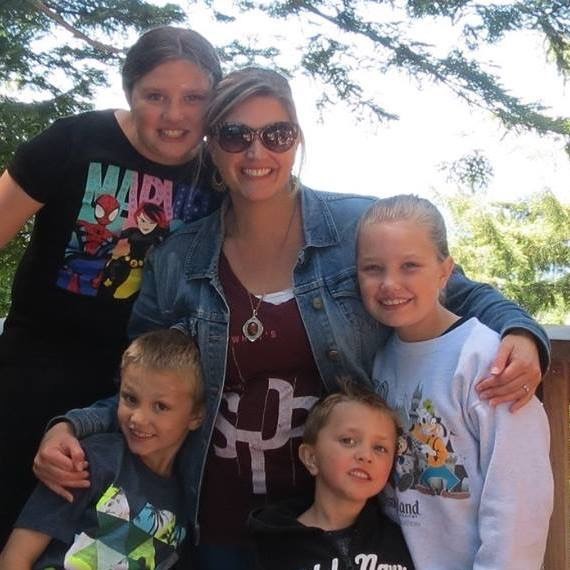
by Shelby | Sep 19, 2019 | Being Well
Although her wellness journey has not been easy, Jaclyn Percy, a single mother of four children aged 7-14 years old has been navigating over barriers for the past year when she started her wellness journey to purse higher education. After being out of school for 18 years, Jaclyn was motivated to make a life change after deciding she desire more for herself and her family. She needed to be more financially independent and wanted to connect with people on an individual basis. With no family in the area, Jaclyn turned to her community for support, and was connected to Tillamook Bay Community College (TBCC). “The community college here is amazing,” Jaclyn stated. “There are a lot of resources and everyone was so friendly and willing to help,” she continued.
Jaclyn had an idea of pursuing a degree in mental health services when she began, however with a strong understanding of herself, she realized she might not have the time to dedicate to pursuing a career in mental health. Describing this moment as her “road block” on her journey, Jaclyn made the conscious choice to continue in another direction rather than be stopped – “anything worth doing is hard,” she emphasized. Jaclyn goes on to share that she had to learn how to ask for help, and once she started, her pathway became more clear and “doors began to open.” Jaclyn found her niche, as she learned more about the two year Occupational Therapy Assistant program through a student resource at TBCC called “Navigators.” Jaclyn describes this as her “intellectual awakening.”
From the community support she found here in Tillamook County, by believing in herself, and from listening to daily affirmations, Jaclyn is now well on her way to complete her degree, and hopes to continue to make a difference in her life, and others; she stated, “you can make a difference in any profession by being kind, smiling, and by being your best self.”
Start or continue your own educational wellness journey at TBCC! Fall Term registration is open now through September 22nd and classes start on September 23rd.
For more local health and wellness information, visit tillamookcountyhealthmatters.org or follow Tillamook County Wellness on Facebook, Instagram and Twitter
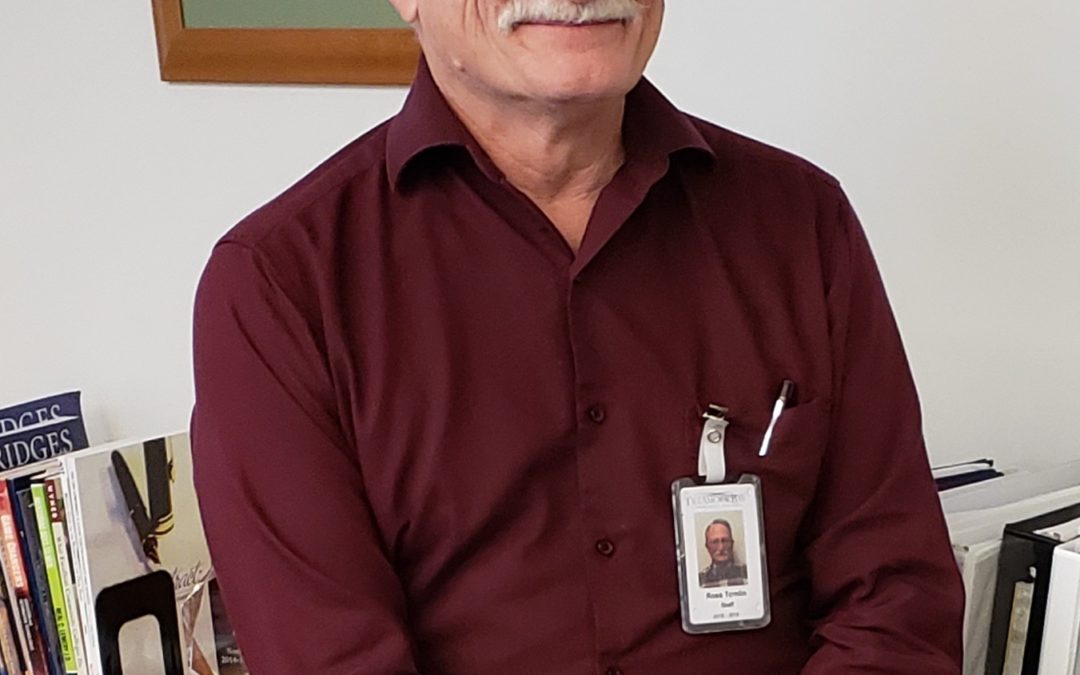
by Guest | Sep 6, 2019 | Being Well
“It is widely recognized that education influences health outcomes and community well-being.” So begins the introductory statement from a recent National Academy of Sciences workshop linking school success with improvements in public health. As our kids head back to school, it is important to remember that education is not just for young children and teens. Lifelong learning and continuing education are tied to better health and quality of life at every age. And, it doesn’t require a four-year degree to experience the benefits of continued learning.
We are very fortunate to have Tillamook Bay Community College right here in Tillamook County, providing affordable, accessible continuing education opportunities in fields that are relevant to our local economy. In collaboration with TBCC, we are sharing the following message from TBCC President, Dr. Ross Tomlin, to highlight these amazing, local opportunities for personal and professional development. If you, or someone you know, are ready to take the next step on your wellness journey, consider a visit to TBCC to explore how they can help you achieve your goals.
Reprinted with permission from the TBCC 2019 Fall Schedule of Classes
All of us here at the college are excited for the upcoming fall activities, and to have students back on campus. TBCC will have a lot of new program opportunities this year, including our new Welding program. This includes a full degree and certificate. There are also new Associate of Science degree programs in Agriculture, Animal Science and Natural Resources that join the AS degree program in Forestry which began last year. These degrees can prepare you to transfer to Oregon State University in their related Bachelor of Science degree programs. There is also a new certificate in Office Supervision within our online Business program, and a new Occupational Skills Training certificate with the Associate of General Science degree program. For any of these programs, reach out to our outstanding group of advisors located in Student Services. They can provide guidance on how to sign up for courses in any of the programs and develop a Career Education Plan that can help you achieve a degree on your schedule.
We are starting our third year of the Career-to-Career Scholarship program that focuses on people in Tillamook County that have been out of high school or have not taken college classes for at least 5 years but want to attend college. We had our first eight Career-to-Career graduates this past June and they all did very well; several are going on to pursue a Bachelor’s Degree. If you think you might be qualified, please check in with student services to apply. In addition, we will be offering several other scholarships using our new online platform. Please take advantage of these opportunities to get some resources to help you with college costs. There is a lot of money available to help you get the education you need to get a good paying career. You just need to seek it out by talking to our knowledgeable staff.
TBCC is joining a statewide community college movement called Guided Pathways. This will help us develop even better ways to help students get on a pathway toward a career, help them stay on the pathway and achieve a completion, whether that is a certificate or Career Technical degree in order to get a good job right out of TBCC, or to transfer on to a university for a Bachelor’s Degree. We are looking forward to enhancing these services to students over the coming year. Fall Term registration is open now through September 22nd and classes start on September 23rd.
For more local health and wellness information, follow Tillamook County Wellness on Facebook, Twitter and Instagram or visit us at tillamookcountyhealthmatters.org.
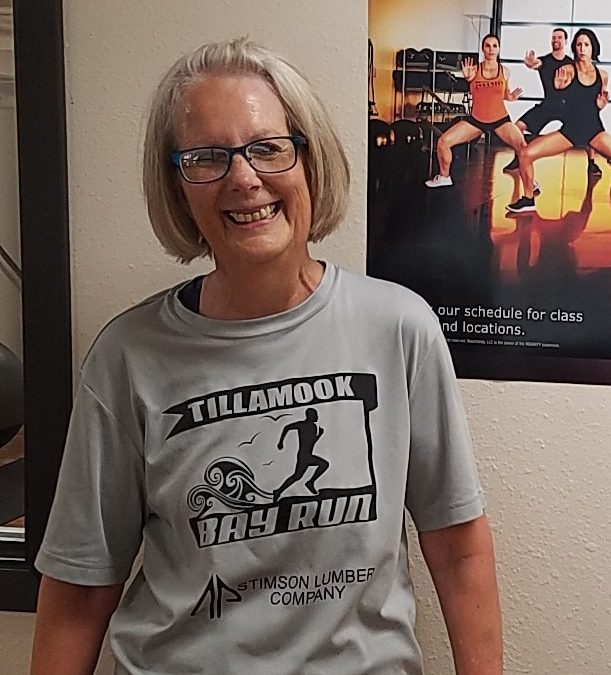
by Michelle | Aug 23, 2019 | Being Well, Eat Well, Recipes

Pam Russell earlier in her journey
Pam Russell’s health journey, like so many others’, has had its ups and downs. Along with recovering from cancer and dealing with other life stresses, Pam has often been frustrated with her weight. As so commonly happens, it seemed there were always issues that got in the way of making lasting health behavior changes. She tried different “quick-fix” approaches, including a liquid diet, but she knew she was not on the right path. “For one thing, I wasn’t learning anything about making healthier choices,” she said, “Plus, I was spending all this money and not seeing the results I wanted. I knew I needed to change my approach but I didn’t know where to start.” Pam admits she was hoping to find a “magic pill” but she was also open to making a long-term commitment to change.
Pam learned that her risk for cancer reoccurrence would be reduced with healthier eating habits and better weight management. Highly motivated after going through cancer recovery, she asked her primary care provider for advice on how to improve her eating habits. Based on the success of other patients and knowing Pam was searching for a convenient solution, her care provider suggested she consider Weight Watchers.
After looking into the program, there were several elements that appealed to Pam. “I’ve learned so much!” she emphasized. “Choosing foods that are right for my goals and tracking what I eat has helped me eat differently.” Pam likes the app that is part of the program and how the points-based system helps with her decision-making throughout the day. What really works for her is that she is changing the way she eats, while also enjoying a better quality of life and sense of well-being.
Pam describes her own “aha” moment as she was learning about food choices. When she realized that fruits and vegetables are nutrient powerhouses that promote health and healing, she found they were much easier to choose and work into her day. She went on to say that what she has learned has totally changed her relationship with food and with eating. After trying many other “quick fixes” and spending a lot of money, she now firmly believes in the power of relatively simple food choices that can make such a big difference. Since, starting this journey, Pam has lost weight, reduced her cholesterol levels and she feels great.
Initially, Pam focused solely on changing her eating habits. Now that she has established a sense of routine around her eating habits, she has added exercise back into her daily life. She says, “adding exercise helped me bust through some of my weight-management plateaus and it also keeps me motivated.” She enjoys participating in group fitness classes at the Y and the sense of community and support they provide.
After the interview, Pam shared an observation of why she believes she and so many others come to the Y. “We go there to heal,” she said. “At least, I know that’s what it has done for me and I think that’s why a lot of other people are there too.”
There are many supports available to people seeking to improve their eating habits, including on-site nutrition services at Tillamook County Community Health Centers, Adventist Health & Rinehart Clinic as well as community programs like CHIP, Cooking Matters, Diabetes UnDone and Diabetes Prevention Program classes offered at the YMCA. Be sure to check with your primary care provider to see what options are available to you and if they are covered by insurance. For more information about local health and wellness programs, visit tillamookcountyhealthmatters.org or follow Tillamook County Wellness on Facebook, Twitter and Instagram.

 Participants will take the prediabetes risk test and learn how they can take part in the year-long program. The Tillamook YMCA offers DPP locally free of charge, which is made possible through a partnership between the YMCA, Tillamook County Community Health Centers, Columbia Pacific CCO and the Oregon Wellness Network.
Participants will take the prediabetes risk test and learn how they can take part in the year-long program. The Tillamook YMCA offers DPP locally free of charge, which is made possible through a partnership between the YMCA, Tillamook County Community Health Centers, Columbia Pacific CCO and the Oregon Wellness Network. Additionally, losing 5-7% of one’s body weight has also been shown to significantly reduce risk for type 2 diabetes. For someone who weighs 200 lbs., for example, that would mean losing 10-14 lbs.
Additionally, losing 5-7% of one’s body weight has also been shown to significantly reduce risk for type 2 diabetes. For someone who weighs 200 lbs., for example, that would mean losing 10-14 lbs.





